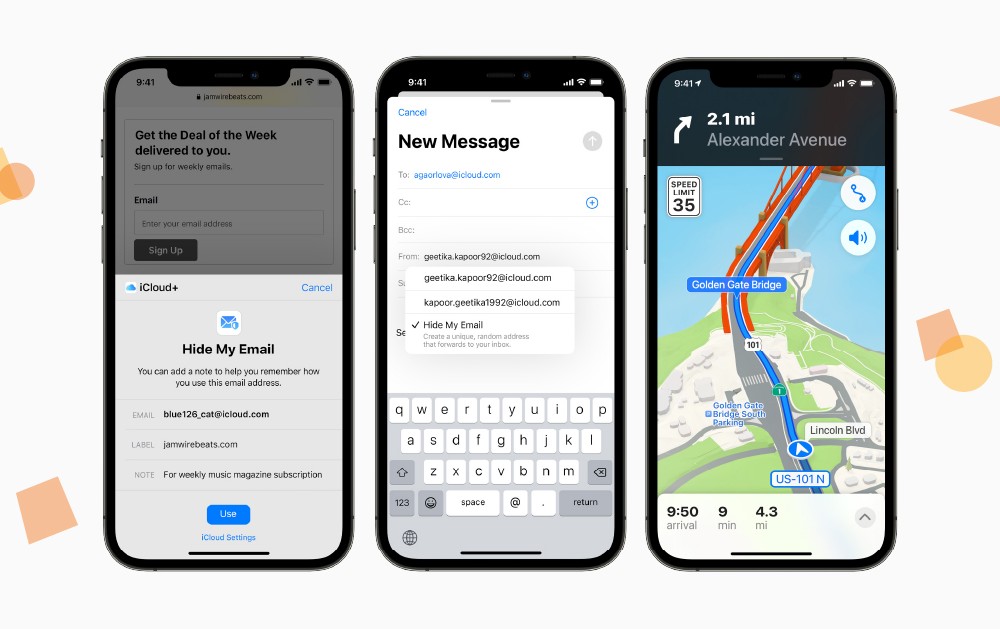
This year at their Worldwide Developers Conference, Apple announced an increase in privacy settings throughout their operating platform, with updates due in September 2021. The iOS 15 update includes a new “Hide My Email” feature which allows users to hide their IP address and block pixels indicating they have opened the email. For a consumer, this is great news. For a marketer, not so great.
For many years, marketing communications have relied on open rates and location as KPIs for monitoring the success of an email campaign. The software update will only affect Apple Mail users, however, 61.7% of emails opened in Q1 2021 were through an Apple device (iPhone, Mac, and iPad)1. This means that the results of these key metrics will now be skewed overall, as there is no way to individually segment an Apple user.
Other email clients such as Microsoft Outlook and Gmail are currently unaffected, however the landscape and conversation is changing.
Email undoubtedly remains a relevant method of communication. When compared to social media and search, we know it to be a ‘tried and tested’ means of communication that is trusted by audiences. Therefore, the future of email marketing content may not in fact need to be all that different from the past, as content should be created with the goal of achieving personalised, engaging relationships in mind. We will, however, need to consider how we measure success and target emails in light of these changes
The first step is to accept that the environment is changing. So, how do you get smarter? The sooner businesses adapt and change their mindset towards campaign KPIs, the more effective their future email marketing strategy will be.
Apple’s new settings will ‘pre-fetch’ images within emails (including tracking pixels within) and download them locally to the device. This means email open rates are sure to see a significant rise, without the recipient opening and viewing the email. We must think beyond metrics relating to open rates to measure success.
With the ability to hide the IP address of the recipient, location data will become less reliable. This will mainly affect geographically targeted campaigns that rely on localised data.
Instead, increased focus is now required on delivery rates and click-through rates (not to be mistaken for click-to-open rates). These indicators can provide information on email list health and content engagement.
List health is vital in creating successful email marketing campaigns. Maintaining an up-to-date list means you are less likely to experience bounces (which effects trust ratings within email clients and determines the successful delivery of email in inboxes rather than a spam folder or can simply get your mailing list rejected). Not only this, but an up-to-date list ensures a relevant and engaged audience. Without open-rate data we will need to rely on segmentation from available metric data such as click-through-rates and bounces to identify active users and clean any hard bounces.
Click data can be utilised to identify engaged users and for creating audience profiles. Users can be segmented to show those who are actively engaged, somewhat engaged and those who are less so, thus allowing marketers to create more personalised relationships with these audiences.
Geographical targeting can still be achieved by utilising sign-up forms. This means we are likely to see an increase in companies asking their prospective audiences to include location data upon sign-up. If you are transparent and explain why you require this data for a more personalised experience, users are more likely to provide it.
Just remember not to ask too much of prospective sign-ups. Refer to your email marketing strategy and select the core KPIs for your campaign, asking for too much information up front may turn away your potential audience.
Traditionally, many campaign automation triggers are associated with the opening of the email, however this will no longer be a reliable trigger point as emails pre-fetch, registering incorrectly.
Instead, we will need to focus on strong calls to action within email content as triggers for further emails within the campaign journey. User experience is key to an effective campaign and click triggers can provide the opportunity for personalised emails and tailored content.
Time zone-dependant campaigns may also be affected missing location data, causing emails to
be sent at the wrong time and making location data from initial sign-up more critical.
A/B testing is a fundamental part of email campaign strategy to ensure content is optimised for both audiences and for KPIs. In this instance, open rates can still be used to provide information on the best subject line as comparison figures between two emails will still show a result.
For more information about our email communication services, contact Onyx Health on 0191 640 3638 or email us at enquiries@onyxhealth.com